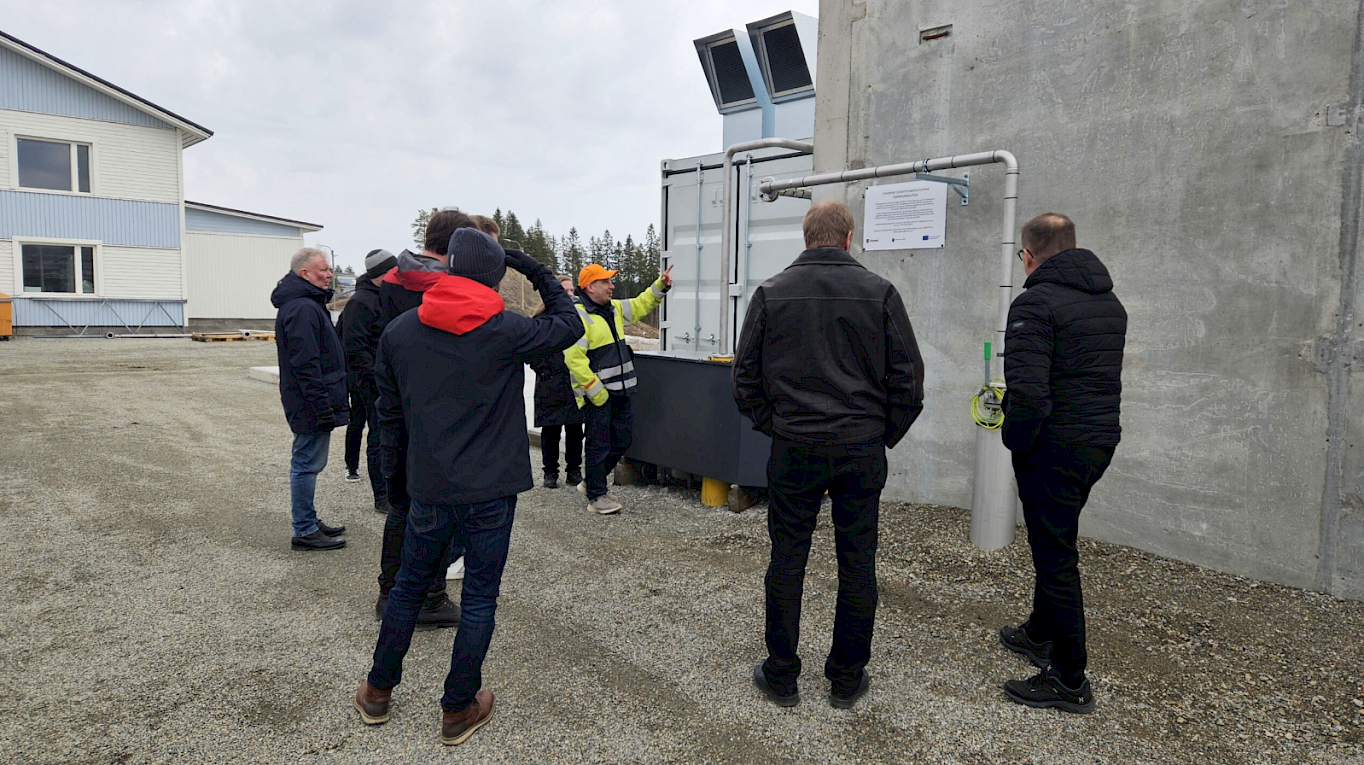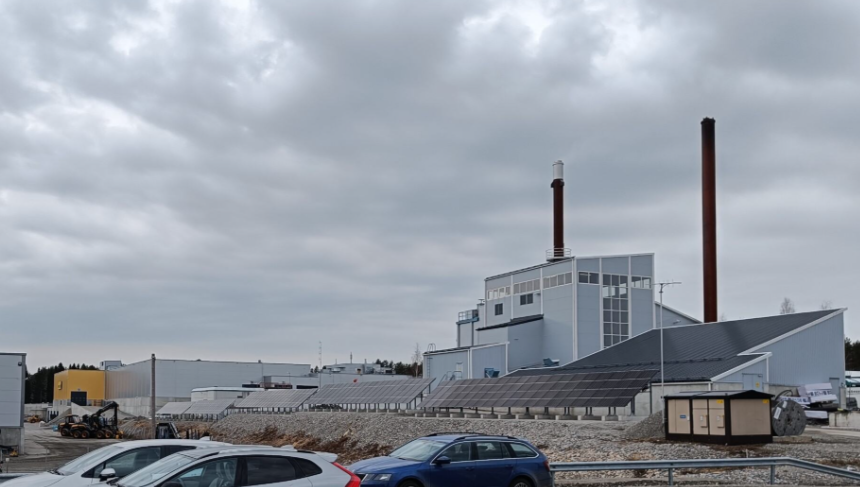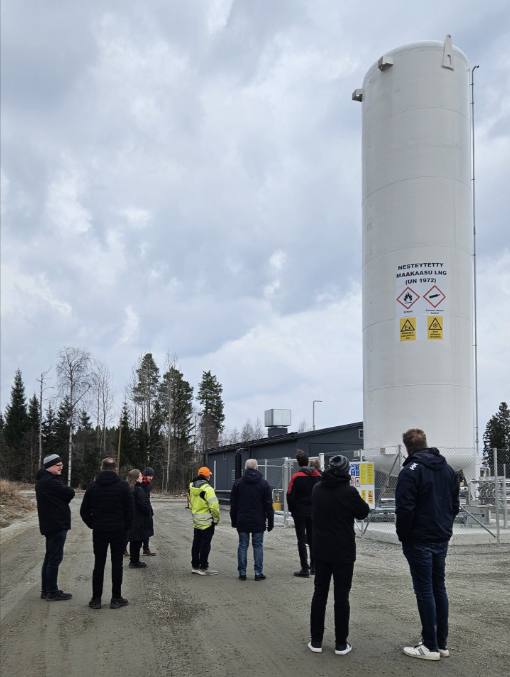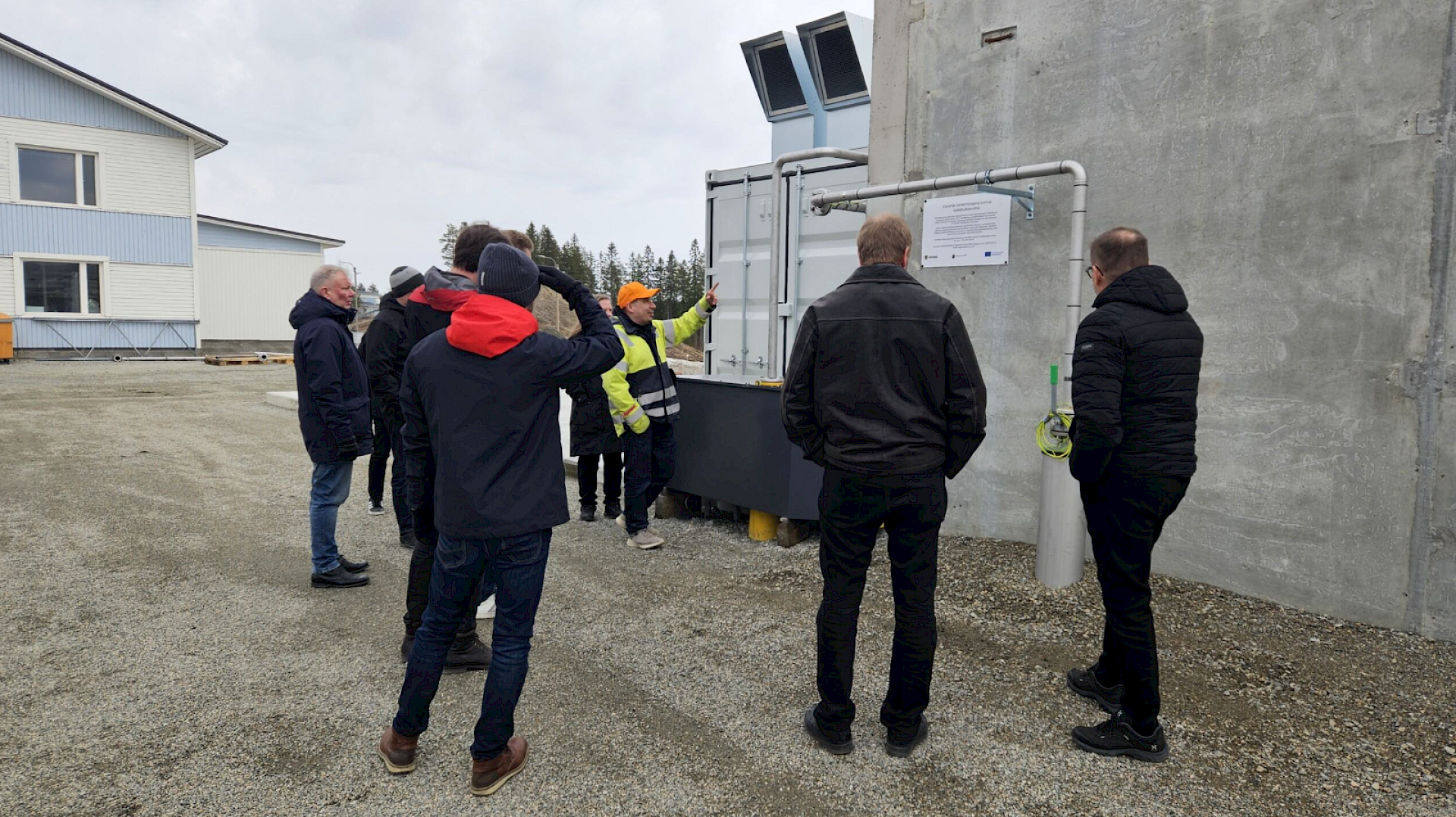The ecosystem model from Vieremä
The Kaustinen and SydänSuomessa regions have great potential for biogas processing. Both regions have interesting openings for the creation of plants, so it was natural to visit Vieremä, where a small municipality with a population of just over 3,000 has done exemplary work on a biogas ecosystem.
The Vieremä biogas ecosystem in a nutshell
The Vieremä Partnership Enterprise Village, Ponsse Oyj and Vieremän Lämpö ja Vesi Oy play a key role in creating demand for the biogas ecosystem. The network uses around 5 GWh of biogas and the gas is delivered by pipeline as raw gas from plants invested by the local farmers themselves. The raw gas can be used as it is on the industrial site or it can be purified and compressed as required, including to a compressed biogas (CBG) filling station, which is also located on the site. Security of supply is enhanced by a backup power plant for district heating from Vieremän Lämpö ja Vesi Oy and a storage tank for liquefied biogas. This means that users can be confident that gas and heat will always be available and gas suppliers know that there is demand. In addition, the municipality of Vieremä has invested in demand creation by converting its fleet of cars and machinery to gas. The municipality of Vieremä has built 14 km of gas pipeline, which will lower the threshold for farmers to become biogas producers.

Photo: Mikko Kajanus, technical director of Vieremä, shows the end point of the raw biogas line, where the compression and purification unit is located. In the background you can see the container where the technical equipment is located and the concrete wall that acts as a safety barrier around the containers of compressed gas.
The use of environmentally friendly energy goes right to the heart of the municipality's strategy
Vieremä's municipal strategy emphasises a strong business sector and a pioneering role in the bioeconomy. The strategy also highlights the environmental friendliness of the agricultural sector. These themes have made it easy to justify investment in the biogas ecosystem.
Vieremän Lämpö ja Vesi Oy is responsible for the sustainability of the biogas network and it is therefore easy for farmers to show that they are an integral part of it - nutrients are well circulated in biogas plants, the biogas produced is a near-zero emission energy source and piped gas transport is better for the environment than trucking.
From the point of view of anyone operating or considering a site in an industrial area, the area is attractive because of the many opportunities for renewable energy. In addition to biogas, there is solar and wind power.
What lessons can we learn from this?
By actively engaging with businesses and farmers, the municipality can act as a coordinating body, identifying the needs and production potential of the various players. Little by little, a system has been able to emerge whereby the chicken-and-egg problem can be solved and demand and supply start to grow. The biogas ecosystem is now off to a good start, with new producers and new users coming on board at an appropriate pace.
Semukas project
The visit was organised by the Interregional Change and Growth project. The aim of the project is to create new and stronger business networks within and between the regions of Kaustinen and SydänSuomessa. The project has received 80% EU funding from the Central Ostrobothnia Regional Council under the Just Transition Fund (JTF). The 20% self-financing share of the projects is borne by the municipalities in the implementing regions.
More photos

Photo: The design of a larger industrial-scale solar park is currently underway, as well as a joint study on the use of rooftops on an industrial site.

Photo: LNG is not yet recognised in the Finnish chemical warning labelling system, so the tower reads "Maakaasu LNG".







